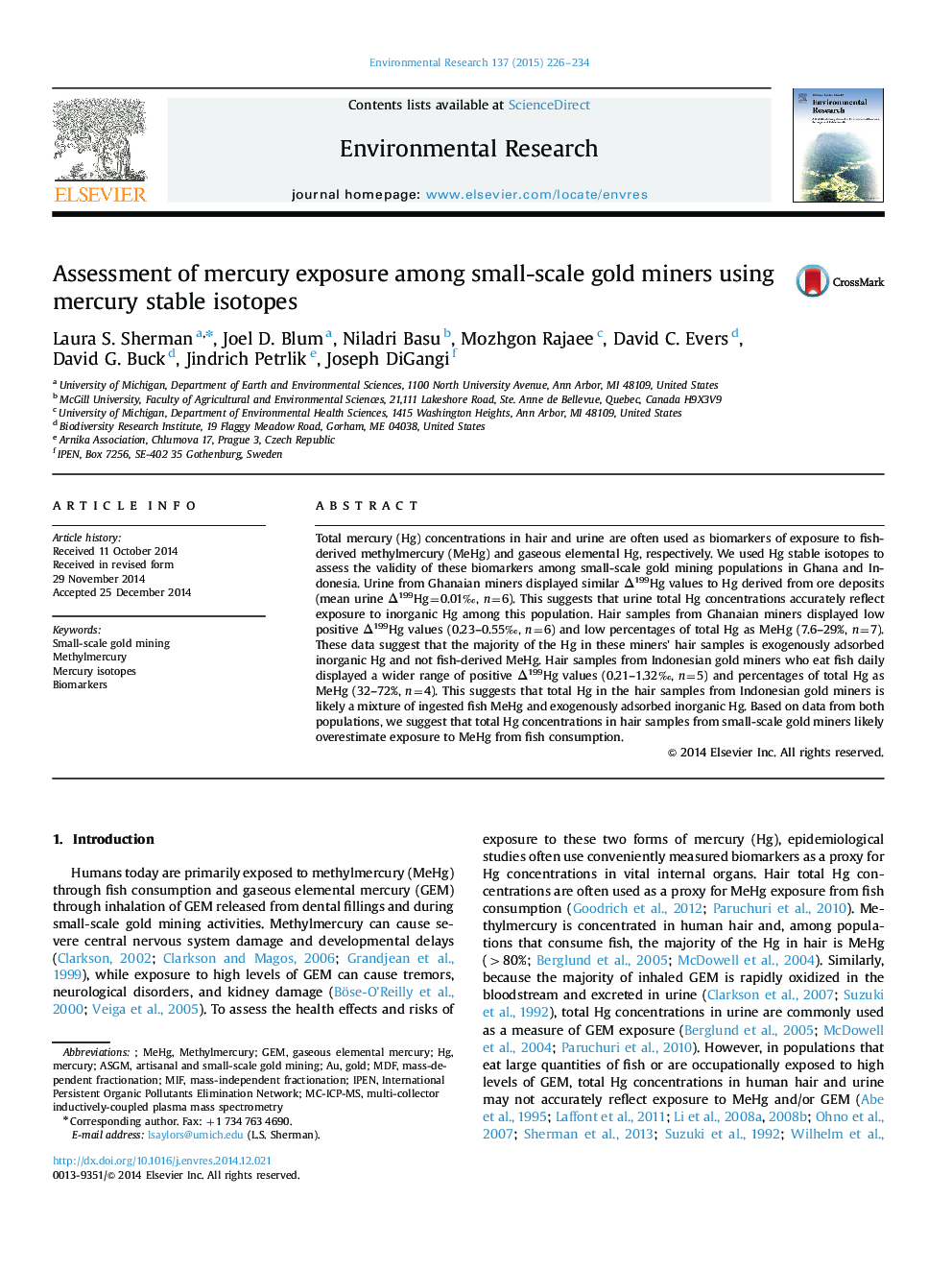| Article ID | Journal | Published Year | Pages | File Type |
|---|---|---|---|---|
| 6352684 | Environmental Research | 2015 | 9 Pages |
Abstract
Total mercury (Hg) concentrations in hair and urine are often used as biomarkers of exposure to fish-derived methylmercury (MeHg) and gaseous elemental Hg, respectively. We used Hg stable isotopes to assess the validity of these biomarkers among small-scale gold mining populations in Ghana and Indonesia. Urine from Ghanaian miners displayed similar Î199Hg values to Hg derived from ore deposits (mean urine Î199Hg=0.01â°, n=6). This suggests that urine total Hg concentrations accurately reflect exposure to inorganic Hg among this population. Hair samples from Ghanaian miners displayed low positive Î199Hg values (0.23-0.55â°, n=6) and low percentages of total Hg as MeHg (7.6-29%, n=7). These data suggest that the majority of the Hg in these miners' hair samples is exogenously adsorbed inorganic Hg and not fish-derived MeHg. Hair samples from Indonesian gold miners who eat fish daily displayed a wider range of positive Î199Hg values (0.21-1.32â°, n=5) and percentages of total Hg as MeHg (32-72%, n=4). This suggests that total Hg in the hair samples from Indonesian gold miners is likely a mixture of ingested fish MeHg and exogenously adsorbed inorganic Hg. Based on data from both populations, we suggest that total Hg concentrations in hair samples from small-scale gold miners likely overestimate exposure to MeHg from fish consumption.
Keywords
Related Topics
Life Sciences
Environmental Science
Health, Toxicology and Mutagenesis
Authors
Laura S. Sherman, Joel D. Blum, Niladri Basu, Mozhgon Rajaee, David C. Evers, David G. Buck, Jindrich Petrlik, Joseph DiGangi,
